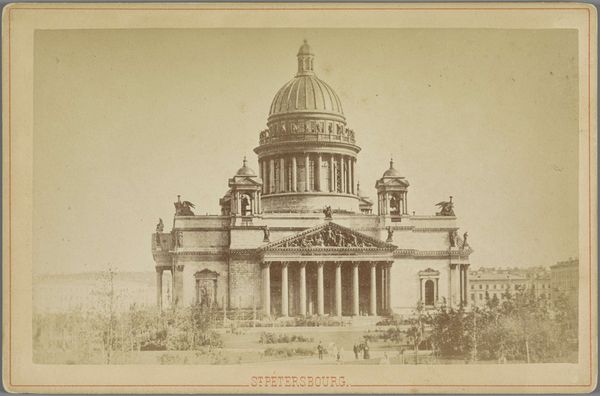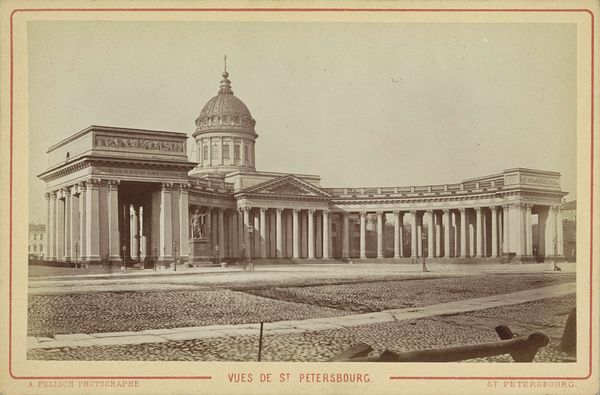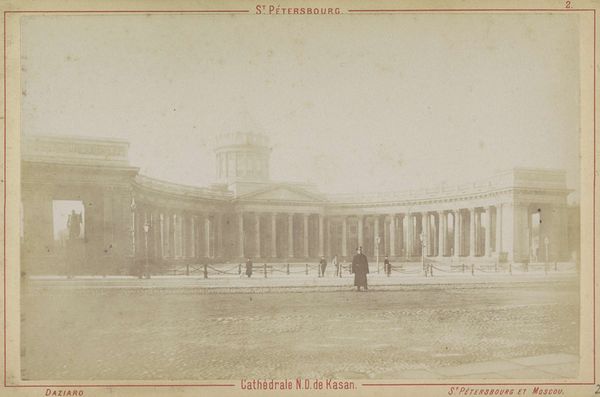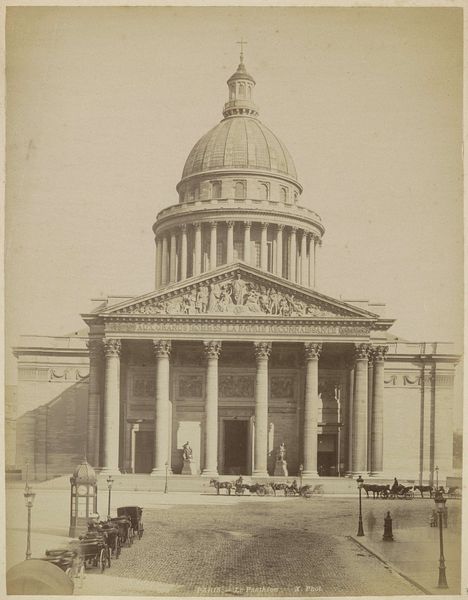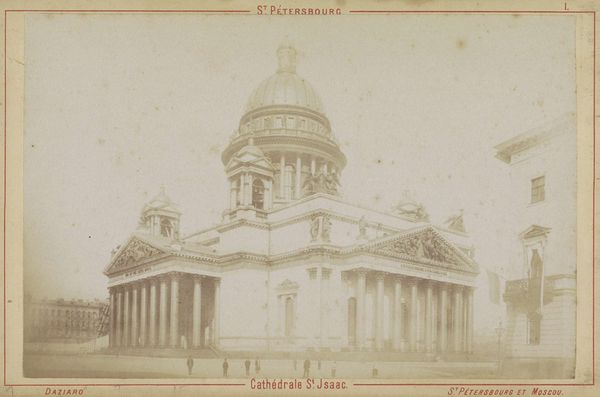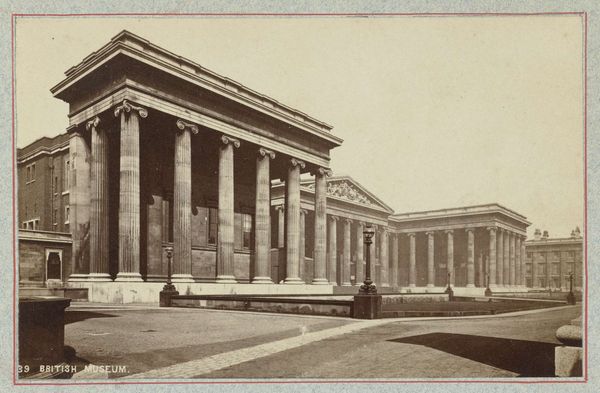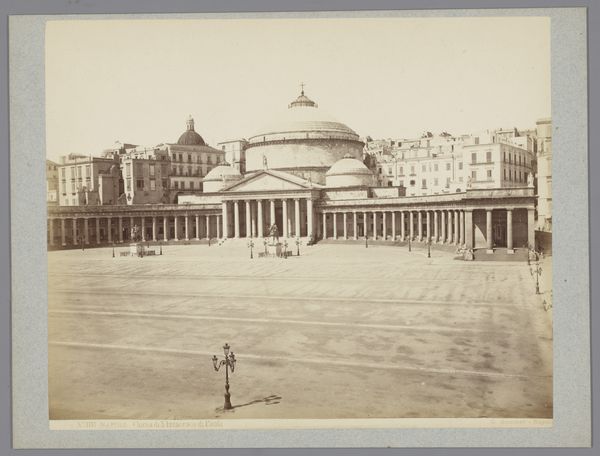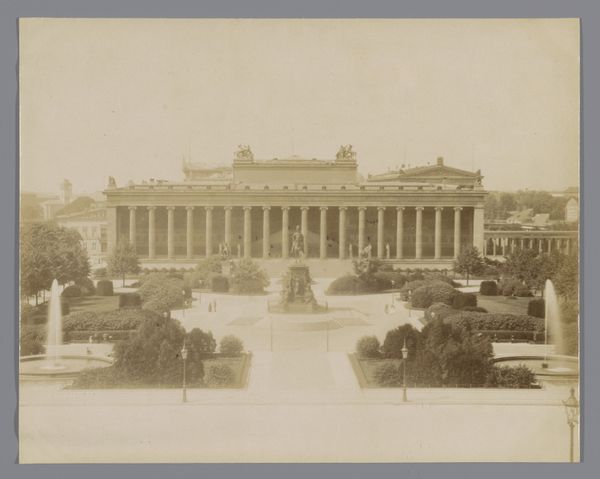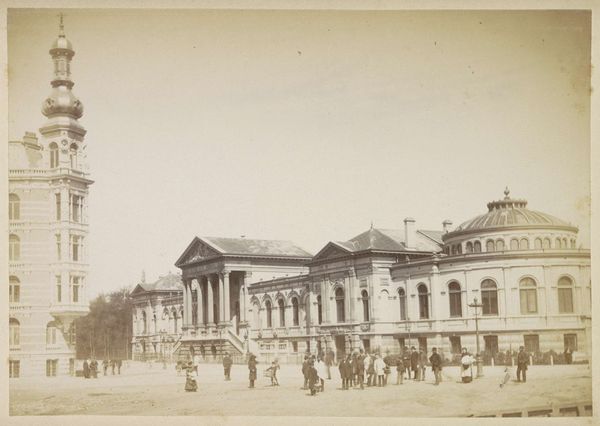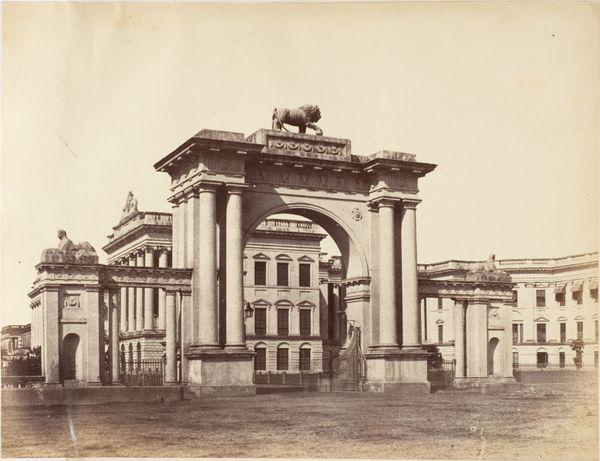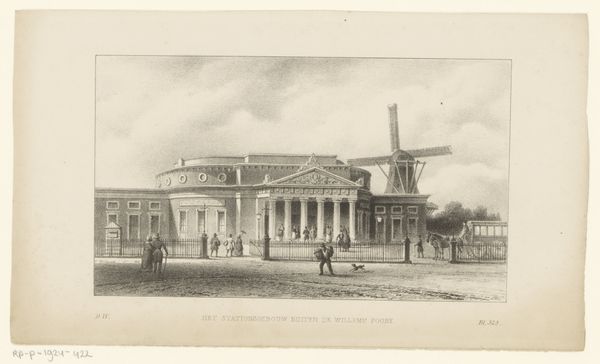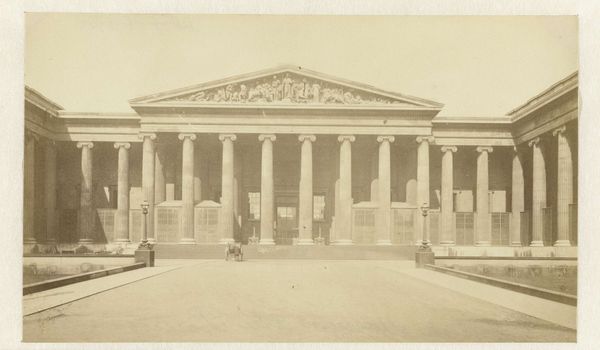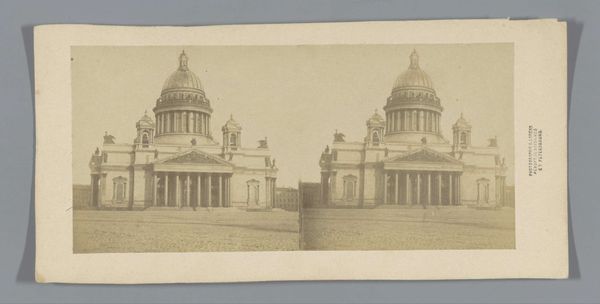
print, photography, albumen-print, architecture
# print
#
photography
#
coloured pencil
#
ancient-mediterranean
#
19th century
#
cityscape
#
watercolor
#
albumen-print
#
architecture
#
realism
Dimensions: height 92 mm, width 150 mm
Copyright: Rijks Museum: Open Domain
Editor: So, this albumen print, "Exterior of the Kazan Cathedral in St. Petersburg," dating from around 1880 to 1900, presents this imposing architectural structure. What I immediately notice is this… timeless quality it seems to evoke, despite being a 19th-century photograph. What stands out to you as you view this image? Curator: What captivates me is the cathedral's striking resemblance to the colonnades of St. Peter's Square in Rome. Can you see the historical echo? This architectural dialogue reveals Russia's aspiration to connect itself with the grandeur and spiritual weight of the Roman Empire. Think about what that meant culturally, politically. What stories are told by the artist selecting this view? Editor: That’s fascinating! So the visual language speaks to this ambition, this conscious borrowing... I hadn't considered that connection. Curator: Exactly. Now consider the muted sepia tones of the print, the way they lend the scene an almost dreamlike quality. Does that colour choice reinforce that classical grandeur or maybe hint at the passage of time, the weight of history on this young, yet powerful, nation? It acts like a memory. Editor: I see what you mean; it’s almost as if the cathedral is presented as this timeless symbol, rather than just a building in a specific time. So the photo transcends simply documenting the building’s appearance. Curator: Precisely. It speaks to the aspirations and anxieties of a nation defining itself. How does photography shape our understanding of monuments, collective memories? Editor: This connection between photography, architecture and historical memory provides a far richer interpretation. Curator: Indeed. Images aren’t neutral carriers of reality; they are potent communicators of cultural values. Editor: That really expands my understanding of how we read and perceive symbols in photography. Thanks for this deeper context!
Comments
No comments
Be the first to comment and join the conversation on the ultimate creative platform.
